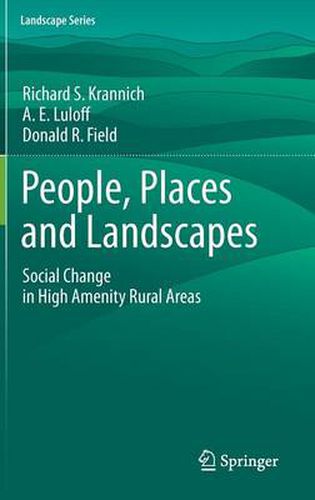Readings Newsletter
Become a Readings Member to make your shopping experience even easier.
Sign in or sign up for free!
You’re not far away from qualifying for FREE standard shipping within Australia
You’ve qualified for FREE standard shipping within Australia
The cart is loading…






This title is printed to order. This book may have been self-published. If so, we cannot guarantee the quality of the content. In the main most books will have gone through the editing process however some may not. We therefore suggest that you be aware of this before ordering this book. If in doubt check either the author or publisher’s details as we are unable to accept any returns unless they are faulty. Please contact us if you have any questions.
This volume is a cogent empirical analysis of the interplay between a region’s natural amenities and its socioeconomic evolution. It focuses on the rural sectors of America’s Intermountain West region, which lies between the Cascades and Sierra Nevada mountains to the west and the Rocky Mountains to the east. Coherently structured and meticulously detailed, it adds much to our understanding of the ways an area’s forests, lakes, mountains, parkland and historic attractions affect residents’ sense of well-being as well as the sociodemographic and economic changes they experience. The book examines patterns of growth and change linked to the emergence of ‘New West’ conditions, assessing their implications for the wider community as well as discussing the impact these trends could have on the consumption of natural resources. It also points to ways in which communities and their development can be managed sustainably.
The tight geographical focus of this valuable resource ensures a depth of analysis which can be applied to similar regions worldwide. Based on a large-scale, random-sample survey of both full-time and seasonal residents, it provides a much-needed overview of the macro-level economic, demographic, and social transformations affecting rural communities in America. As such, the book has relevance for all researchers concerned with rural development, the changes impacting rural landscapes, and natural resource management.
$9.00 standard shipping within Australia
FREE standard shipping within Australia for orders over $100.00
Express & International shipping calculated at checkout
This title is printed to order. This book may have been self-published. If so, we cannot guarantee the quality of the content. In the main most books will have gone through the editing process however some may not. We therefore suggest that you be aware of this before ordering this book. If in doubt check either the author or publisher’s details as we are unable to accept any returns unless they are faulty. Please contact us if you have any questions.
This volume is a cogent empirical analysis of the interplay between a region’s natural amenities and its socioeconomic evolution. It focuses on the rural sectors of America’s Intermountain West region, which lies between the Cascades and Sierra Nevada mountains to the west and the Rocky Mountains to the east. Coherently structured and meticulously detailed, it adds much to our understanding of the ways an area’s forests, lakes, mountains, parkland and historic attractions affect residents’ sense of well-being as well as the sociodemographic and economic changes they experience. The book examines patterns of growth and change linked to the emergence of ‘New West’ conditions, assessing their implications for the wider community as well as discussing the impact these trends could have on the consumption of natural resources. It also points to ways in which communities and their development can be managed sustainably.
The tight geographical focus of this valuable resource ensures a depth of analysis which can be applied to similar regions worldwide. Based on a large-scale, random-sample survey of both full-time and seasonal residents, it provides a much-needed overview of the macro-level economic, demographic, and social transformations affecting rural communities in America. As such, the book has relevance for all researchers concerned with rural development, the changes impacting rural landscapes, and natural resource management.